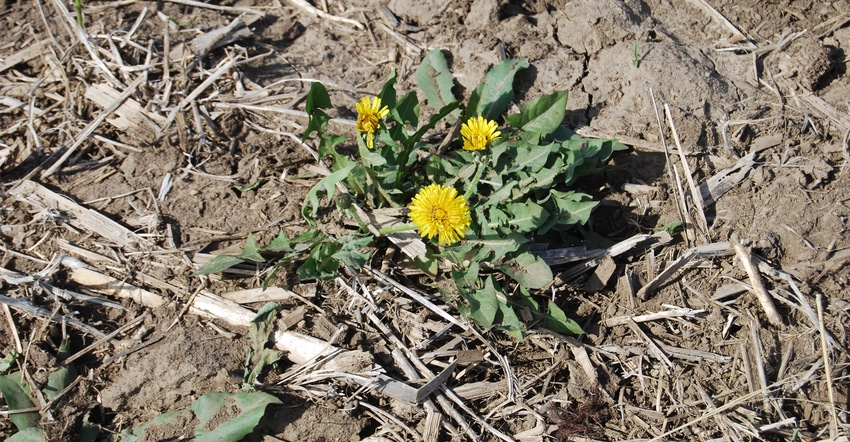October 3, 2019

Weed control doesn’t end once the crop is out of the ground. The months between harvest and spring planting are prime time for winter annual weeds to establish and begin to take over fields. For growers in Iowa and surrounding states, this can mean the frustrating return of hard-to-control weeds such as glyphosate-resistant marestail, which has now infected 75 million acres across the United States.
In previous years, growers could wait until early spring to target winter weeds, when the temperatures increase, and weeds are actively growing. The 2019 season is different, though, as a lot of herbicides didn’t make it into the ground, and periods of wet and dry weather have set up ideal conditions for a late weed flush close to harvest.
For growers with weedy fields now, BASF product manager Tim Parry recommends applying a fall burndown to minimize weed seed banks and give growers a head start toward a successful 2020 season.
Applying burndown herbicide in fall
Applying a burndown such as Distinct and Sharpen herbicides in the fall helps provide flexibility in the spring, Parry says. Spring weather can be unpredictable and the number of optimal days for burndown herbicide applications is much greater in the fall. He suggests managing winter annual and perennial weeds after harvest, when the weeds may be smaller and easier to control.
Aside from flexibility, there are three other key benefits of a fall burndown that growers should consider:
The control of winter annual weeds can assist in pest control next season. Since winter annual weeds are often hosts for other pests that overwinter, controlling weeds in the fall can help to eliminate pest issues. Pests such as soybean cyst nematodes are easier to control in the fall by wiping out their hosts.
Cleaner fields in the spring can mean timely planting and improved crop emergence. A fall burndown provides growers with the opportunity for an earlier planting date, as they won’t have to deal with weeds in the spring. Growers can reduce their spring workload by controlling winter weeds in the fall, before they outgrow the size restriction on many herbicide labels. Also, fall is the best time to manage perennial weeds such as dandelion.
Time and money are saved through operational efficiency. “It’s never too early or too late to begin your weed control program,” says Parry.
For more information on fall burndown herbicides, visit agriculture.basf.com.
Source: BASF, which is responsible for information provided and is wholly owned by source. Informa Business Media and subsidiaries aren’t responsible for any content in this info asset.
You May Also Like




